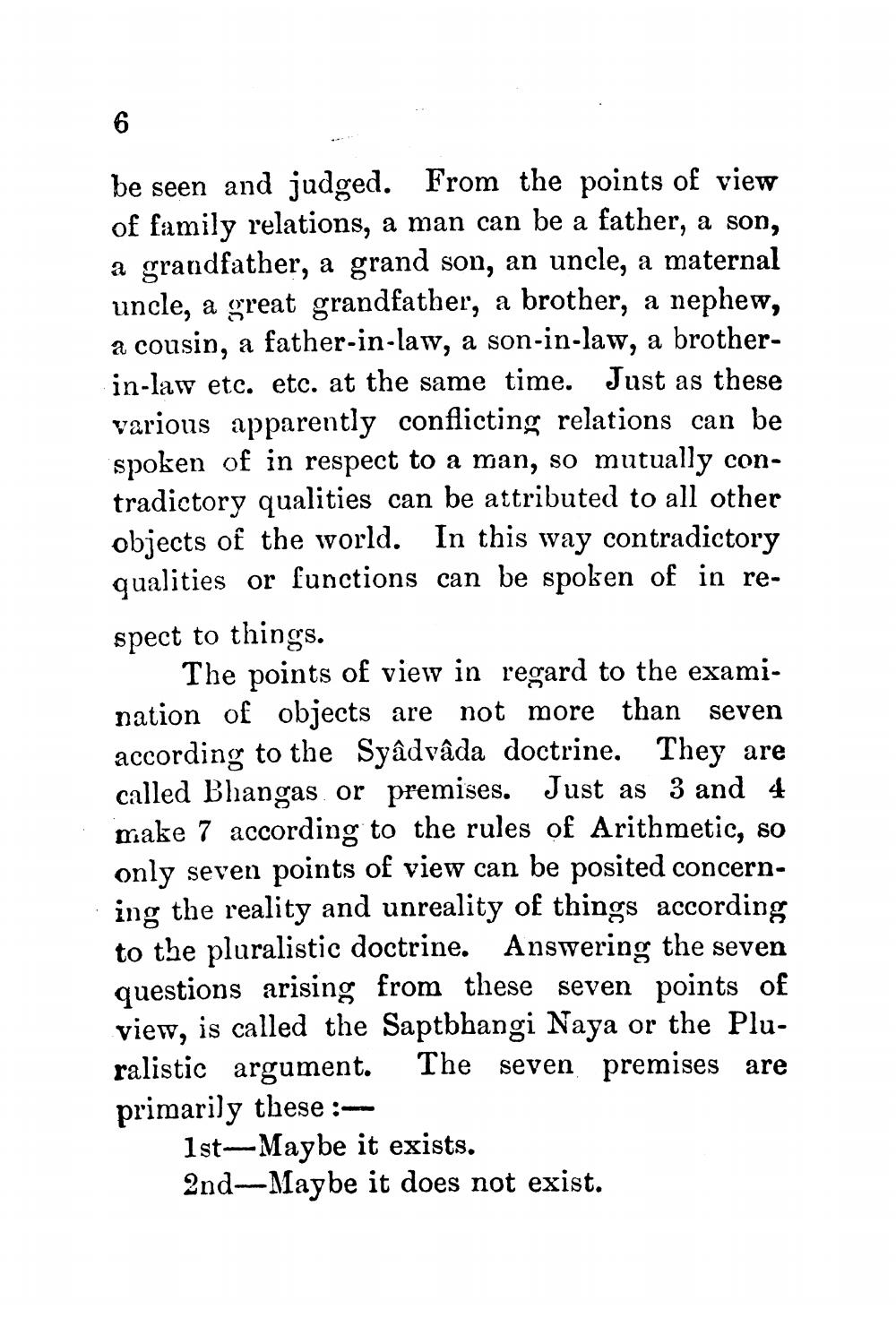Book Title: Saptbhanginaya Author(s): Kannomal Publisher: Atmanand Jain Pustak Pracharak Mandal View full book textPage 9
________________ be seen and judged. From the points of view of family relations, a man can be a father, a son, a grandfather, a grand son, an uncle, a maternal uncle, a great grandfather, a brother, a nephew, a cousin, a father-in-law, a son-in-law, a brotherin-law etc. etc. at the same time. Just as these various apparently conflicting relations can be spoken of in respect to a man, so mutually contradictory qualities can be attributed to all other objects of the world. In this way contradictory qualities or functions can be spoken of in respect to things. The points of view in regard to the examination of objects are not more than seven according to the Syâdvâda doctrine. They are called Bhangas or premises. Just as 3 and 4 make 7 according to the rules of Arithmetic, so only seven points of view can be posited concerning the reality and unreality of things according to the pluralistic doctrine. Answering the seven questions arising from these seven points of view, is called the Saptbhangi Naya or the Pluralistic argument. The seven premises are primarily these : 1st-Maybe it exists. 2nd-Maybe it does not exist.Page Navigation
1 ... 7 8 9 10 11 12 13 14 15 16 17 18 19 20 21 22 23 24 25 26 27 28 29 30 31 32 33 34
